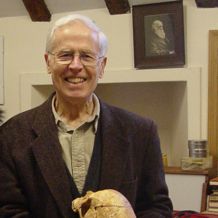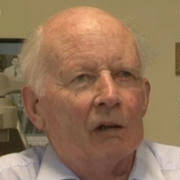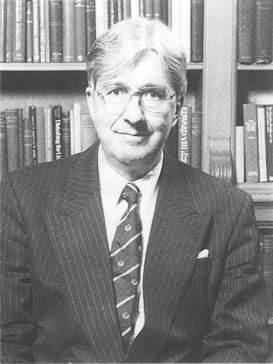Related Research Articles

The Cavendish Laboratory is the Department of Physics at the University of Cambridge, and is part of the School of Physical Sciences. The laboratory was opened in 1874 on the New Museums Site as a laboratory for experimental physics and is named after the British chemist and physicist Henry Cavendish. The laboratory has had a huge influence on research in the disciplines of physics and biology.

Donald Reginald Brothwell, was a British archaeologist, anthropologist and academic, who specialised in human palaeoecology and environmental archaeology. He had worked at the University of Cambridge, the British Museum, and the Institute of Archaeology of University of London, before ending his career as Professor of Human Palaeoecology at the University of York. He has been described as "one of the pioneers in the field of archaeological science".

Florence Gwendolen Rees, FRS was a Welsh zoologist and parasitologist. She was the first Welsh woman to become a fellow of the Royal Society. By the time she was 80 years old, she had published 68 papers.
John G. Webster was an American electrical engineer and a founding pioneer in the field of biomedical engineering. In 2008, Professor Webster was awarded the University of Wisconsin, College of Engineering, Polygon Engineering Council Outstanding Instructor Award. In 2019, the Institute of Electrical and Electronics Engineers awarded him its James H. Mulligan Jr. Educational Medal for his career contributions. Professor Webster died on March 29, 2023.
Michael Balls is a British zoologist and professor emeritus of medical cell biology at the University of Nottingham. He is best known for his work on laboratory animal welfare and alternatives to animal testing.
William Ryan Dawson was an American zoologist and ornithologist and emeritus professor of zoology at the University of Michigan. He is known in the field of ornithology for his comparative studies on desert and closely related non-desert birds in the south-western United States, Mexico and Australia.
The School of Biological Sciences is a School within the Faculty Biology, Medicine and Health at The University of Manchester. Biology at University of Manchester and its precursor institutions has gone through a number of reorganizations, the latest of which was the change from a Faculty of Life Sciences to the current School.
Eduardo Hugo Rapoport was an Argentinian ecologist and emeritus professor at Universidad Nacional del Comahue. He is widely known for his fundamental work on soil biology, biological invasions, and urban ecology and, in particular, for his contributions to the biogeography.

Leonard Robert Morrison Cocks, OBE, TD, known as Robin Cocks, was a British geologist, formerly Keeper of Palaeontology, Natural History Museum. He was best known for his work on brachiopods, and their use in reconstructing Earth history and past ecosystems.
William Brunsdon Yapp was an English zoologist and author who worked as a senior lecturer in zoology at the University of Birmingham. Among his major works was a study of the birds illustrated in medieval English works including the Bayeux Tapestry.
Ian Richard Swingland is a British conservationist, convicted in 2017 of conspiring to commit fraud by false representation. He founded DICE at the University of Kent in 1989, recognised as one of the first interdisciplinary research and postgraduate training institutes in the world concentrating on biodiversity, communities and sustainable development. While at DICE he served as director and was elected to the first chair in Conservation Biology in the United Kingdom.
Brian Keith Hall is the George S. Campbell Professor of Biology and University Research Professor Emeritus at Dalhousie University in Halifax, Nova Scotia. Hall has researched and extensively written on bone and cartilage formation in developing vertebrate embryos. He is an active participant in the evolutionary developmental biology (EVO-DEVO) debate on the nature and mechanisms of animal body plan formation. Hall has proposed that the neural crest tissue of vertebrates may be viewed as a fourth embryonic germ layer. As such, the neural crest - in Hall's view - plays a role equivalent to that of the endoderm, mesoderm, and ectoderm of bilaterian development and is a definitive feature of vertebrates. As such, vertebrates are the only quadroblastic, rather than triploblastic bilaterian animals. In vertebrates the neural crest serves to integrate the somatic division and visceral division together via a wide range novel vertebrate tissues.
David Mark Richardson is a South African ecologist, particularly known for his work on invasive species, especially invasive trees and shrubs.
Hugh Godfrey Maturin Williamson is a theologian and academic. He was Regius Professor of Hebrew at the University of Oxford from 1992 to 2014, a position he now holds as Emeritus.
Kerry John Downes was an English architectural historian whose speciality was English Baroque architecture. He was Professor of History of Art, University of Reading, 1978–91, then Emeritus.
Peter William Harold Holland is a zoologist whose research focuses on how the evolution of animal diversity can be explained through evolution of the genome. He is the current Linacre Professor of Zoology at the University of Oxford, and a Fellow of Merton College, Oxford.
Ruth Mace FBA is a British anthropologist, biologist, and academic. She specialises in the evolutionary ecology of human demography and life history, and phylogenetic approaches to culture and language evolution. Since 2004, she has been Professor of Evolutionary Anthropology at University College London.

Edward Osmund Royle Reynolds, CBE, FRCP, FRCOG, FRCPCH, FMedSci, FRS, was a British paediatrician and Neonatologist who was most notable for the introduction of new techniques intended to improve the survival of newborns, especially those with respiratory failure, and for a series of papers regarding the value of techniques such as ultrasound imaging, nuclear magnetic resonance spectroscopy, and near infrared spectroscopy in determining the development and response to injury of the infant brain after birth.
Mark Edward John Woolhouse OBE FRSE FMedSci is professor of infectious disease epidemiology at the Usher Institute in the College of Medicine and Veterinary Medicine at the University of Edinburgh, Scotland.
John Donald Currey, was a British zoologist who lectured at the University of York where he specialised in the biomechanics of mineralised tissues such as bone.
References
- 1 2 3 4 "Professor Mark Williamson Emeritus". UK: University of York . Retrieved 29 April 2017.
- ↑ Perrings, Charles; Williamson, Mark H.; Dalmazzone, Silvana, eds. (2001). The Economics of Biological Invasions (Reprint ed.). Edward Elgar. ISBN 978-1840643787.
- ↑ "The control of invasive alien species". Research Excellence Framework . UK: University of York. 2014. Retrieved 2 May 2017.
- ↑ Williamson, Mark; White, David, eds. (2013). A History of the first fifty years of Biology at York (PDF). UK: University of York . Retrieved 29 April 2017.